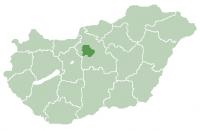|
|
|
The history of Budapest began with Aquincum, originally a Celtic settlement that became the Roman capital of Lower Pannonia. Magyars arrived in the territory in the 9th century. Their first settlement was pillaged by the Mongols in 1241-42. The re-established town became one of the centres of Renaissance humanist culture in the 15th century. Following the Battle of Mohács and nearly 150 years of Ottoman rule, development of the region entered a new age of prosperity in the 18th and 19th centuries, and Budapest became a global city after the 1873 unification. It also became the second capital of Austria-Hungary, a great power that dissolved in 1918. Budapest was the focal point of the Hungarian Revolution of 1848, the Hungarian Soviet Republic of 1919, Operation Panzerfaust in 1944, the Battle of Budapest of 1945, and the Revolution of 1956. Cited as one of the most beautiful cities in Europe, its extensive World Heritage Site includes the banks of the Danube, the Buda Castle Quarter, Andrássy Avenue, Heroes' Square and the Millennium Underground Railway, the second oldest in the world. Other highlights include a total of 80 geothermal springs, the world's largest thermal water cave system, second largest synagogue, and third largest Parliament building. The city attracts about 2.3 million tourists a year. Considered a financial hub in Central Europe, the city ranked 3rd (out of 65 cities) on Mastercard's Emerging Markets Index, and ranked as the most livable Central/Eastern European city on EIU's quality of life index. It is also ranked as "Europe's 7th most idyllic place to live" by Forbes. It is the highest ranked Central/Eastern European city on Innovation Cities' Top 100 index. Budapest is home to the headquarters of the European Institute of Innovation and Technology (EIT), and the first foreign office of the CIPA. |




 RSS
RSS